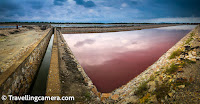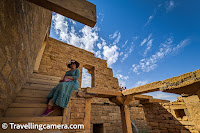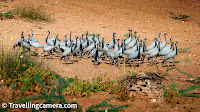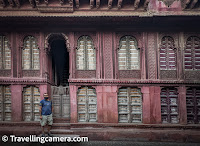One of the most famous fortifications in India, it lies in Jaipur, Rajasthan. Amber Fort is known as Amer Fort. Amber Fort stands on a small hill that takes an hour car ride from the city center. This marvellous fort features masterly fusion of Hindu and Mughal styles of architectural excellence. Amber Fort was built in 1592 by the great king Raja Man Singh I and was the capital of the Kachwaha Rajput clan until the formation of Jaipur. The monument, with its stunning beauty, rich history, and dramatic views, continues to be one of the first choices for people of all walks of life from all over the world.
Historical Background
Amber Fort has a history which goes back as early as the 10th century in the form of a small setup made by the Meenas tribe. Nonetheless, it was Raja Man Singh I who primarily built the fort in 1592 and then it was developed further by the expansion works of Jai Singh I and a few other Kachwaha rulers. The fort was named after Amber (or Amba Mata), a goddess for which locals have been greatly reverent. The fort served as the seat of the Kachwaha Rajput rulers until Jaipur became the new capital in the 18th century.
Architectural Marvel
Amber Fort is one of the most famous and attractive examples of Rajputana architecture which reflects elements of Hindu and Mughal styles. It was constructed using red sandstone and white marble, giving it a unique look, especially at sunrise and sunset when the colors of the fort seem to change hues.
Main Architectural Features:
Suraj Pol or Sun Gate: Suraj Pol is the big entrance to Amber Fort, which accesses Jaleb Chowk, a big platform on which victorious parade lines used to stand. It was also used for military parades and hosting the guests of the ruling family.
This is a gate leading to the private palaces of the fort. It has been named after Lord Ganesha, and over the archway, the idol of Lord Ganesha is painted. The intricate frescoes and beautiful latticework make Ganesh Pol one of the most photographed spots in the fort.
Diwan-i-Aam (Hall of Public Audience): It is an open hall where the king used to go and address the public and listen to their grievances. It is exquisitely carved with carved columns and latticed galleries, reflecting the Mughal architecture that it carries.
Sheesh Mahal (Mirror Palace): The most famous part of Amber Fort is the Sheesh Mahal, or Mirror Palace-a fabulous hall decorated with interlocking mirror mosaics and colored glasses. The legend goes that a single candle's light would make light up the entire hall, spreading bright colors across the mirrors, like the night sky.
After Sheesh Mahal, there is the Sukh Niwas (Hall of Pleasure), which is very much in the known for having a cool climate due to water channels and intricate ventilation. It is said that the Rajput king used to sit here during hot summer as a means of relaxation.
Zenana (Women's Quarters): The Zenana or the women's quarters was meant to provide privacy to the ladies of the royalty. Along with the interconnected chambers, such that they can walk around without facing any outsider. This part of the fort reflects the traditional Rajput custom of purdah, veil.
Gardens and Courtyards
One of the notable attractions of Amber Fort is its beautiful gardens, especially Kesar Kyari Bagh (Saffron Garden). This garden is of an outstanding star shape. It lies right in the middle of the Maota Lake and was intended to add an aesthetic dimension to the view that bordered the fort. The garden looks exceptionally beautiful from the upper levels of the fort.
Light and Sound Show
The Light and Sound Show at Amber Fort should be included in every tourist's itinerary who visits this place. The show is conducted in the evening and narrates the history of the fort and their rulers' life in such a mesmerizing manner that it has left everyone awe-struck. The colorful lights illuminate the whole fort as a whole, making it a treasure for tourists to cherish. The languages of the presentation are Hindi and English, and valor and culture along with the traditions of Rajasthan are highlighted without any doubt.
Legends and Myths
Amber Fort also holds some really interesting and myth-filled legends in its account. One among them speaks of one of the most favourite consorts of Raja Man Singh, who is said to have possessed a secret chamber within the fort that could be accessed only by herself. And then there is another legend that talks of a hidden tunnel running between Amber Fort and Jaigarh Fort that enables the royal family to escape in times of siege.
How to Reach Amber Fort
Amber Fort is accessible from Jaipur and other parts of Rajasthan with ease:
By Road: The place is 11 km from the main city of Jaipur. You may hire a taxi, catch an adjoining local bus or take a car to reach the fort.
By Air: Your closest airport is Jaipur International Airport. This can be reached by driving 23 kilometers from the fort.
By Train: The nearest railway station is Jaipur Junction; taxi and auto-rickshaw would be available to reach the fort from here.
Best Time to Visit
The best time to visit Amber Fort is from October to March, during the winter months when it's cool and pleasant. This time is ideal for admiring the buildings of the Amber Fort and panoramic views of Jaipur without scorching summers.
Other Local Attractions
Amber Fort is part of a large historical zone; some exciting local attractions may be worth mentioning below.
Jaigarh Fort: Also known as the Victory Fort, Jaigarh Fort lies atop one hill overlooking Amber Fort and access is available only through underground tunnels.
Nahargarh Fort: The fort is located at the top of the Aravalli Hills, and viewpoints are excellent for overlooking the Jaipur cityscape.
Jal Mahal: It is an outstanding water palace in the centre of Man Sagar Lake. It can be spotted on the way to Amber Fort from Jaipur. Trending Conservation Efforts
Of late, the government has been putting in quite an effort in the preservation of Amber Fort, where considerable and continuous efforts are being brought forward towards maintaining the architectural as well as cultural excellence intact in the structures. The India Archaeological Survey, hand in glove with the local authorities, has initiated various restoration projects so that this piece of history remains in its original splendor for generations to come.
Amber Fort is not only a monument, but instead a living inheritance to the royal heritage of Rajasthan. It depicts the grandeur and art of this previous culture in remembrance of the glorious past through its means of fine arts. It will be interesting and culturally important to visit Amber Fort while traveling to Jaipur. Whether you are a history buff, an architecture lover, or a traveler interested in seeing the grandeur of this royal India splendor, Amber Fort promises to be a journey through the ages and a ride on tradition that is both enchanting and unforgettable.
Related Blogposts:

























.jpg)



.jpg)
























.jpg)

.jpg)
Comments